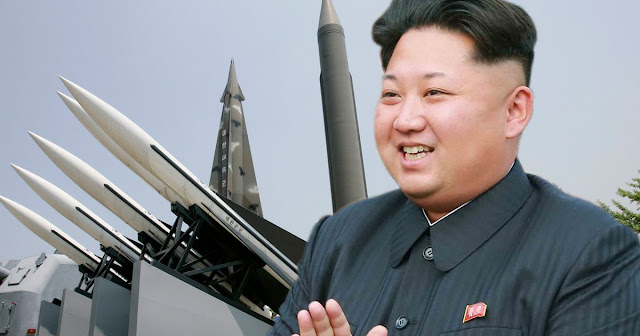TOPIC: North Korea Launches Hypersonic Missle
The reclusive communist state of North Korea has once again reached a military milestone, with their leader, Kim Jong Un personally overseeing the launch of a hypersonic missile on Wednesday.
Concerned Neighbours
Though the official announcement came on Wednesday, both Japan and South Korea reported the launch on Tuesday, stating they suspected it to be a ballistic missile, a weapon banned by the United Nations. The hypersonic glide vehicle made a 600km 'glide jump flight', followed by a 240km 'corkscrew' before striking a target at sea roughly 1000km away. Despite the name, hypersonic missiles are in fact most dangerous not due to their speed, but due to increased manoeuvrability. Now with new information in hand, it appears the same type of missile was first fired last week. However, South Korea reported that the most recent test appeared to show improved performance, reaching speeds over ten times the speed of sound. Currently, the United States, Russia and China have all successfully tested hypersonic missiles in the past.
North Korea's New Five Year Plan
At a time when coronavirus has wrecked havoc upon the already stagnant North Korean economy, it may have been wise for the North Korean leadership to re-orientate themselves away from further expensive military projects. Nonetheless, the most recent of North Korea's five year plans appears to aim for the exact opposite. Hypersonic missiles were stated to be among the 'top priority' tasks in the new plan, with the regime making steady headway in this regard, with the first test having been carried out in September 2021. In a meeting of North Korea's ruling party last month, Kim appeared himself and promised to continue to develop the countries military arsenal through conventional and unconventional means.
After the latest test, the North Korean press recorded Kim as pressing his scientists to 'further accelerate the efforts to steadily build up the country's strategic military muscle both in quality and quantity and further modernise the army.' His presence itself is seen as an acceleration of the project having not been witnessed at a missile launch since March 2020.
A Threat to Regional Stability
North Korean weapon tests in the past have been met with a fairly heavy dose of scepticism, but North Korea has undoubtedly increased its military capacity significantly across the previous decade, posing a serious threat to regional stability. Under the Trump presidency, there was heavy pressure for North Korea to denuclearise, but these were met with limited success, with the talks having collapsed in 2019. Since then, Pyongyang has stated a willingness to return to the diplomatic table, but only if sanctions and military drills are halted by the United States and its regional allies, particularly South Korea. This however, is a non-starter, with the US committed to the imposition of sanctions and the conducting of military drills, so long as the North insists on its nuclear weapons programme. With diplomacy having reached a complete impasse, the threat to regional stability from North Korea is only likely to grow.
 |
| Image source: Reuters |


Comments
Post a Comment